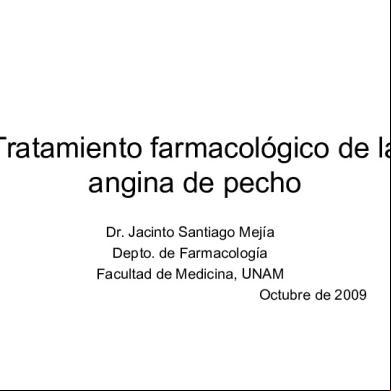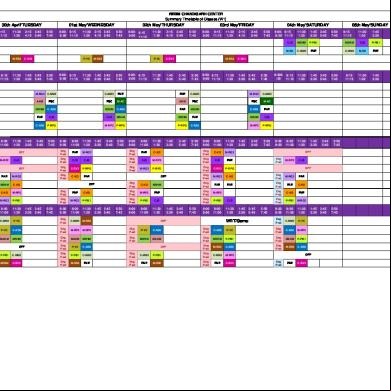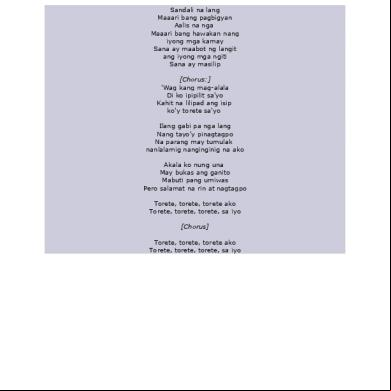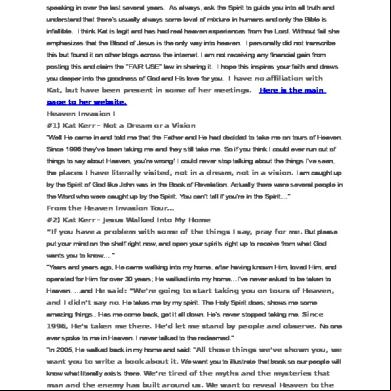Angina 181p14
This document was ed by and they confirmed that they have the permission to share it. If you are author or own the copyright of this book, please report to us by using this report form. Report 2z6p3t
Overview 5o1f4z
& View Angina as PDF for free.
More details 6z3438
- Words: 586
- Pages: 21
Angina Amareen Bhambra Senior Pharmacist Royal Brompton & Harefield NHS Trust
Aims and objectives Define
term angina Understand the different management strategies Role of pharmacist
Agenda Angina Pathogenesis Risk
factors Diagnosis Management Surgical revascularisation Secondary prevention
Angina Coronary
heart disease Stable angina
Episodes chest pain Usually predictable Physical exertion Emotional stress
Unstable
At rest Sudden
angina
Pathogenesis Stable
angina
Stenosed coronary artery unable to meet myocardial oxygen demand = chest pain on exertion
Unstable
angina
Progression of atherosclerosis following the rupture of plaque
Risk factors Modifiable
Hypertension Smoking Hyperlipidaemia Diabetes
Non-modifiable
Age Sex Family Hx
Diagnosis
Accurate clinical Hx Establish or exclude presence IHD ECG Haemoglobin
Anaemia exacerbate ischaemic chest pain
Thyroid function Fasting glucose Cholesterol
NICE recommends statin therapy to all high-risk patients regardless of serum cholesterol
Management of angina
Aim to relieve symptoms and reduce CV risk
Symptom management – increase oxygen supply by dilating coronary arteries Sublingual GTN (acute), beta blockers/long-acting nitrates/CCBs Reduce CV risk – smoking cessation, exercise, diet, alcohol consumption, weight and diabetes Prevent future cardiac events
Choice of treatment Initial
management consists one or two antiangina drugs. Beta blocker/CCB If symptoms are not controlled:
Long acting nitrate Nicorandil Ivabradine Ranolazine
Beta blockers Reduce
heart rate, blood pressure and contractility of myocardium Reduction myocardial oxygen demand Reduce mortality rates Atenolol, bisoprolol, metoprolol
Cardioselective
Calcium channel blockers Modulate
calcium influx into vascular smooth muscle and myocardium = vasodilatory effect Dihydropyridines – amlodipine Benzothiapine – diltiazem Phenylalkylamines - verapamil
Nitrates GTN
Denitration releases nitric oxide Dilatation lowers myocardial oxygen requirements
Sublingual
GTN
Alleviate immediate symptoms
Transdermal
Tolerance
GTN
Long-acting nitrates ISDN ISMN MR
preparations Compliance Nitrate free period
Nicorandil K+
channel activator Gradual dose titration to minimise side effects Gastrointestinal ulceration 10mg BD
Ivabradine Inhibits If channel
in sinus node Value in patients requiring reduction HR
Beta blockers rate-controlling CCB are C/I
Licensed chronic stable angina in adults with CAD in normal SR Combination beta blocker HR >60bpm
5-7.5mg BD (2.5mg BD elderly)
Side effects: visual symptoms, bradycardia
Ranolazine Mechanism
not well understood Improved diastolic function HR or blood pressure not altered Side effects – constipation, nausea, dizziness Interactions – simvastatin 375mg BD, after 2-4 weeks 500mg BD, max 750mg BD
Surgical revascularisation PCI Poor
symptom control despite medical treatment Late stent thrombosis CABG Improve survival compared to medical management select cohort patients
Secondary prevention Aspirin Statin Beta
blocker ACEI
Antiplatelet therapy Secondary 75mg
prevention
OD Inhibits COX1 and TxA2 prevents platelet activation and aggregation Clopridogrel as alternative
Summary Angina
pain – atherosclerosis Establish CV history for accurate diagnosis Management –
Drug treatment Reduce modifiable risk factors
Role
of pharmacist
References NICE
guideline 126. Management of stable angina Evidence-based Management of Coronary Heart Disease – available via PE Clinical Pharmacist – Stable angina. Sotiris Antoniou. Jan 2012. Ben-Dor I, Battler A. Treatment of stable angina. Heart. 2007, 93: 868-874.
Aims and objectives Define
term angina Understand the different management strategies Role of pharmacist
Agenda Angina Pathogenesis Risk
factors Diagnosis Management Surgical revascularisation Secondary prevention
Angina Coronary
heart disease Stable angina
Episodes chest pain Usually predictable Physical exertion Emotional stress
Unstable
At rest Sudden
angina
Pathogenesis Stable
angina
Stenosed coronary artery unable to meet myocardial oxygen demand = chest pain on exertion
Unstable
angina
Progression of atherosclerosis following the rupture of plaque
Risk factors Modifiable
Hypertension Smoking Hyperlipidaemia Diabetes
Non-modifiable
Age Sex Family Hx
Diagnosis
Accurate clinical Hx Establish or exclude presence IHD ECG Haemoglobin
Anaemia exacerbate ischaemic chest pain
Thyroid function Fasting glucose Cholesterol
NICE recommends statin therapy to all high-risk patients regardless of serum cholesterol
Management of angina
Aim to relieve symptoms and reduce CV risk
Symptom management – increase oxygen supply by dilating coronary arteries Sublingual GTN (acute), beta blockers/long-acting nitrates/CCBs Reduce CV risk – smoking cessation, exercise, diet, alcohol consumption, weight and diabetes Prevent future cardiac events
Choice of treatment Initial
management consists one or two antiangina drugs. Beta blocker/CCB If symptoms are not controlled:
Long acting nitrate Nicorandil Ivabradine Ranolazine
Beta blockers Reduce
heart rate, blood pressure and contractility of myocardium Reduction myocardial oxygen demand Reduce mortality rates Atenolol, bisoprolol, metoprolol
Cardioselective
Calcium channel blockers Modulate
calcium influx into vascular smooth muscle and myocardium = vasodilatory effect Dihydropyridines – amlodipine Benzothiapine – diltiazem Phenylalkylamines - verapamil
Nitrates GTN
Denitration releases nitric oxide Dilatation lowers myocardial oxygen requirements
Sublingual
GTN
Alleviate immediate symptoms
Transdermal
Tolerance
GTN
Long-acting nitrates ISDN ISMN MR
preparations Compliance Nitrate free period
Nicorandil K+
channel activator Gradual dose titration to minimise side effects Gastrointestinal ulceration 10mg BD
Ivabradine Inhibits If channel
in sinus node Value in patients requiring reduction HR
Beta blockers rate-controlling CCB are C/I
Licensed chronic stable angina in adults with CAD in normal SR Combination beta blocker HR >60bpm
5-7.5mg BD (2.5mg BD elderly)
Side effects: visual symptoms, bradycardia
Ranolazine Mechanism
not well understood Improved diastolic function HR or blood pressure not altered Side effects – constipation, nausea, dizziness Interactions – simvastatin 375mg BD, after 2-4 weeks 500mg BD, max 750mg BD
Surgical revascularisation PCI Poor
symptom control despite medical treatment Late stent thrombosis CABG Improve survival compared to medical management select cohort patients
Secondary prevention Aspirin Statin Beta
blocker ACEI
Antiplatelet therapy Secondary 75mg
prevention
OD Inhibits COX1 and TxA2 prevents platelet activation and aggregation Clopridogrel as alternative
Summary Angina
pain – atherosclerosis Establish CV history for accurate diagnosis Management –
Drug treatment Reduce modifiable risk factors
Role
of pharmacist
References NICE
guideline 126. Management of stable angina Evidence-based Management of Coronary Heart Disease – available via PE Clinical Pharmacist – Stable angina. Sotiris Antoniou. Jan 2012. Ben-Dor I, Battler A. Treatment of stable angina. Heart. 2007, 93: 868-874.











